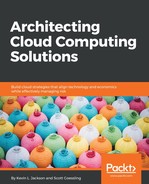Book Description
Accelerating Business and Mission Success with Cloud Computing.
About This Book- A step-by-step guide that will practically guide you through implementing Cloud computing services effectively and efficiently.
- Learn to choose the most ideal Cloud service model, and adopt appropriate Cloud design considerations for your organization.
- Leverage Cloud computing methodologies to successfully develop a cost-effective Cloud environment successfully.
If you are an IT Administrator, Cloud Architect, or a Solution Architect keen to benefit from cloud adoption for your organization, then this book is for you.
Small business owners, managers, or consultants will also find this book useful.
No prior knowledge of Cloud computing is needed.
What You Will Learn- Manage changes in the digital transformation and cloud transition process
- Design and build architectures that support specific business cases
- Design, modify, and aggregate baseline cloud architectures
- Familiarize yourself with cloud application security and cloud computing security threats
- Design and architect small, medium, and large cloud computing solutions
Cloud adoption is a core component of digital transformation. Scaling the IT environment, making it resilient, and reducing costs are what organizations want. Architecting Cloud Computing Solutions presents and explains critical Cloud solution design considerations and technology decisions required to choose and deploy the right Cloud service and deployment models, based on your business and technology service requirements.
This book starts with the fundamentals of cloud computing and its architectural concepts. It then walks you through Cloud service models (IaaS, PaaS, and SaaS), deployment models (public, private, community, and hybrid) and implementation options (Enterprise, MSP, and CSP) to explain and describe the key considerations and challenges organizations face during cloud migration. Later, this book delves into how to leverage DevOps, Cloud-Native, and Serverless architectures in your Cloud environment and presents industry best practices for scaling your Cloud environment. Finally, this book addresses (in depth) managing essential cloud technology service components such as data storage, security controls, and disaster recovery. By the end of this book, you will have mastered all the design considerations and operational trades required to adopt Cloud services, no matter which cloud service provider you choose.
Style and approachThis book will teach you how to architect effective and organizationally aligned Cloud computing solutions by addressing Cloud computing fundamentals, Cloud architecture considerations, Cloud technology service selection, and Cloud computing security controls.
